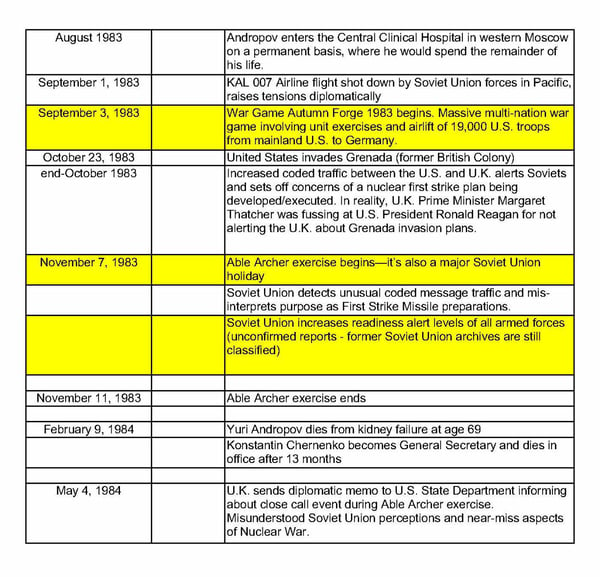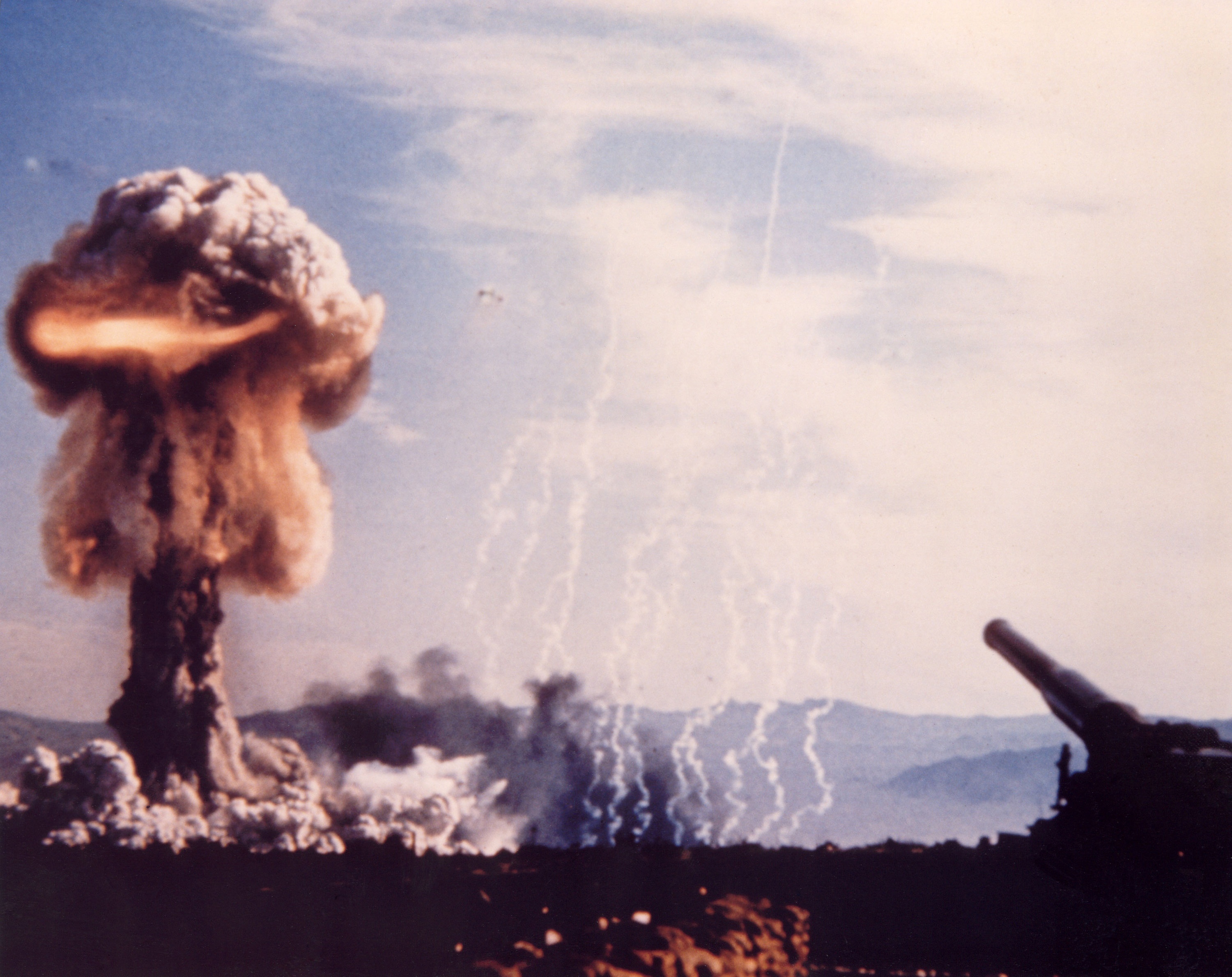What were you doing in November 1983? Did you know the United States and Soviet Union were the closest to nuclear war since the 1962 Cuban Missile Crisis?
During a U.S. small branch war game exercise called Able Archer, the Soviet Union determined war was imminent and was considering a first strike option to prevent NATO from gaining the upper hand. The first strike, or decapitation strike, was based on a MAD (Mutual Assured Destruction) approach to a “survivable” nuclear war. Studies conducted by the Soviet and U.S. militaries separately a surprise attack the worst-case option for surprise attack.
Able Archer was part of the Autumn Forge 83, a NATO activity based on the coordination of the Exercise Reforger (return of forces to Germany). Elements of Exercise Reforger included the deployment of troops to Germany via airlift, the coordination of multinational forces and several side-games to practice individual strategies. Able Archer was a small branch exercise in conjunction with Autumn Forge that practiced the coordination and use of nuclear weapons.
A Cause Map, a visual root cause analysis, can be used to create a root cause analysis case study and analyze this incident. A Cause Map is built by asking “why” questions and using the answers to visually lay out the cause-and-effect relationships that contributed to an incident. Mapping out the causes ensures all facets of a problem are well understood and helps facilitate the development of effective, detailed solutions that to reduce the risk of a similar issues in the future.
A Cause Map and a timeline are helpful to better understand the Able Archer 83 near-miss.
Here is a simple view of the incident.

The timeline of the near-miss shows what happened at a specific date and time, but it does not explain why it happened. A timeline is dependent on time, but a cause‐and‐effect analysis like a Cause Map is dependent on causes (“why” questions). A timeline is necessary for large incidents to better understand issue causes. The timeline provides the context of what was happening and contributing factors into the Soviet escalation and response to Able Archer 1983.
After all, misunderstandings can escalate into unimaginable catastrophe. Statements from officials like Ronald Reagan’s 1983 “Evil Empire” speech, combined with the shoot-down of the Korean Airlines 747 over Soviet territory, increased tension. This was also the beginning of the deployment of Intermediate Range Nuclear missiles by the U.S. into Europe. There was additional coded radio traffic between the U.S. and U.K. just prior to Able Archer. The Soviets interpreted this as nuclear first strike planning. In reality, it was Margaret Thatcher arguing with Ronald Reagan regarding the recent U.S. invasion of Grenada (a former U.K. colony).
Here’s the timeline for this near-miss: In fact, the information on a timeline may be relevant over years or decades. We can add to the above timeline with additional relevant historical events going back to the Cuban Missile Crisis in 1962.
In fact, the information on a timeline may be relevant over years or decades. We can add to the above timeline with additional relevant historical events going back to the Cuban Missile Crisis in 1962.
The near-miss event came to attention of the U.S. government and Ronald Reagan in 1984 when there appeared to be a dramatic change in President Reagan’s philosophy of nuclear weapon disarmament rather than build-up. There have been other close calls of unintended war, but thankfully during Able Archer 1983 calmer heads prevailed. See the Cause Map below.
Did you know about the near-miss of Able Archer in 1983? What do you think of this historical Cause Map?











